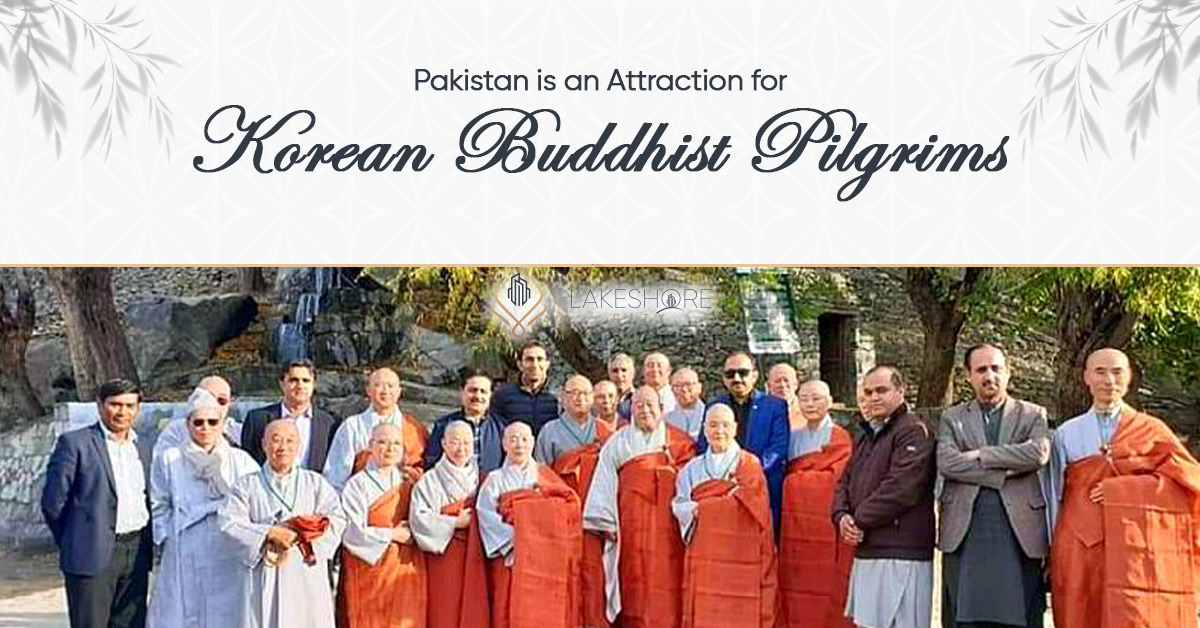TAXILA: Thirty Buddhist monks and the president of the Jogye Order Wonhaeng, the largest branch of Buddhism in South Korea, visited the Archaeological Museum and other Buddhist locations to carry out religious rites.
Along with other monks, Mr. Wonhaeng, the 36th president of the Jogye Order, performed religious ceremonies in front of Buddha tooth artifacts in the Taxila Museum before performing rituals at the historic Buddhist shrine Dharmarajika.
Abdul Nasir Khan, the director of the museum, welcomed the Korean monks.
When the monks visited the museum, they were drawn to the artefacts and statues of Buddha and his followers.
Mr. Khan informed the delegation that the relics on show here date back more than 2,000 years to the time when Buddhist monks lived in Taxila, the epicentre of the historic Gandhara civilization.
While others in the delegation took photos, others engaged in religious ceremonies.
I’ve been wanting to travel to Pakistan for 20 years, said Mr. Wonhaeng.
“Gandhara is a rich source of information for introspection. I believe we can understand the Buddha’s message—the preference for mankind over divinity—through these works of art.
He continued by saying that the Taxila Museum, which houses hundreds of works of Gandharan art, was also popular with Koreans.
Speaking on the occasion, Dr. Park Kyo Soon, General Secretary of the Gandhara Art and Culture Association, said that she had been working for two decades to create a bridge between Korean Buddhists and Pakistan, and that this visit would not only help to project a positive image of Pakistan but also draw in tourists who are interested in religion.
Dr. Park claimed that she organised an exhibition in June 2017 that involved the shipment to Korea of 40 Buddha statues from the Peshawar Museum. The delegation, she continued, has been in Pakistan for eight days and has already visited Lahore and Gilgit-Baltistan. They will also be visiting other Khyber Pakhtunkhwa historical places, such as Swat, Mardan, and Peshawar.
She stated that the Gandharan civilization, which flourished 2,000 years ago in the regions of present-day northern Pakistan, is where Korea’s Buddhism originated. She also stated that the Mahayana school of Korean Buddhism, one of the two main branches along with the Hinayana school, was introduced to the ancient Kingdom of Baekje dating back to the 4th century by monk Maranatha, who was originally from present-day Pakistan. Later, in the 8th century, Korean monk Hyecho travelled
Stupas, shrines, and courtyards continue to stand in for the Buddhist sacred land today, she continued.
In response to a query, she stated that the rich history of the Gandhara civilization makes Pakistan a popular destination for Korean Buddhist pilgrims and tourists. She said that if heritage tourism is fostered, cultural ties between Pakistan and South Korea can be improved.
The monks also went to Julian, a Buddhist monastery and stupa that dates back to the second century AD and is situated on the bank of the River Haro close to Taxila. Julian is also known as the Old Taxila University.
Read More: Thai Monk Visits Buddhist Sites in Swat
Don’t miss the chance to invest with Lakeshore! Secure your investment today by investing your financial investment with Lakeshore in the following available options like Lakeshore City, Lakeshore Club, and Lakeshore Farms.
For More updates, please Contact +92 335 7775253 or visit our website https://lakeshorecity.com/
Lakeshore City is the upcoming elite lifestyle at Khanpur Dam. Offering no parallel amenities for the members and owners of distinguished farmhouses.
Become Part of Luxurious Lifestyle
Contact: 0335 7775253



